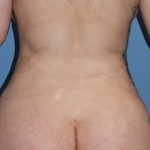Rhinoplasty – The Influence of Anatomy on Nose Shape
Rhinoplasty continues to be a popular facial procedure and is one operation that is almost synonymous with plastic surgery. The central position of the nose on the face makes the need for any rhinoplasty surgery to be very precise. Good results in rhinoplasty are largely dependent upon a detailed understanding of the anatomy of Read More…


